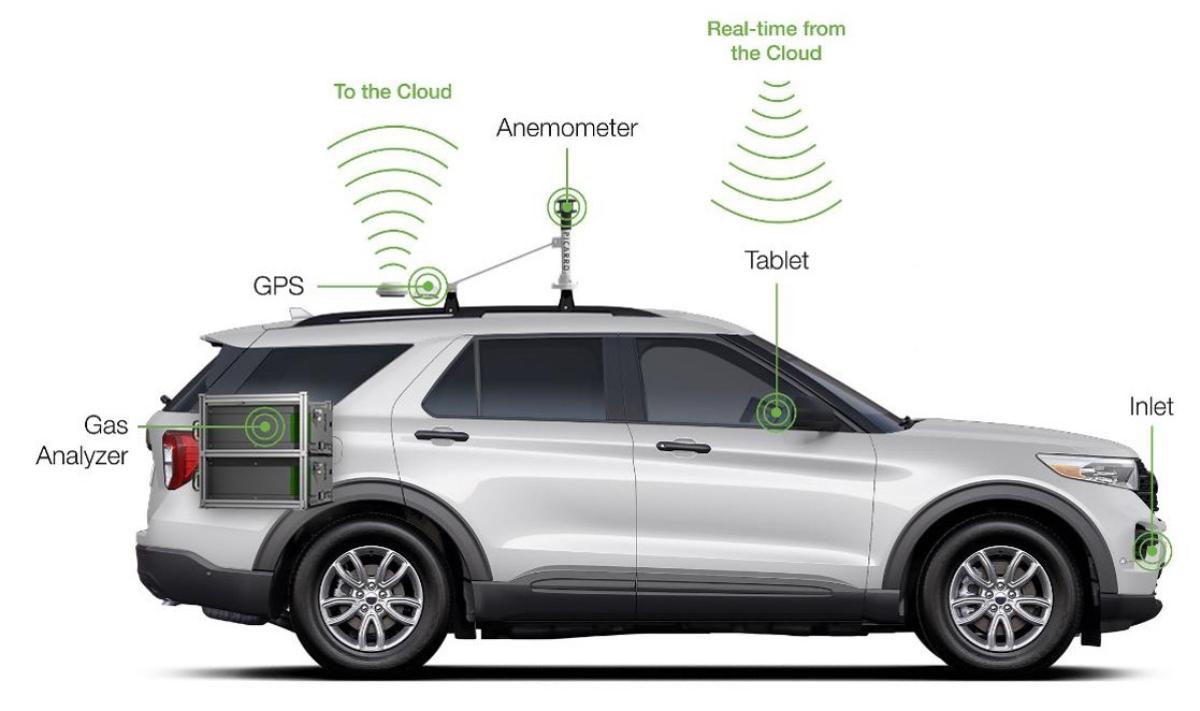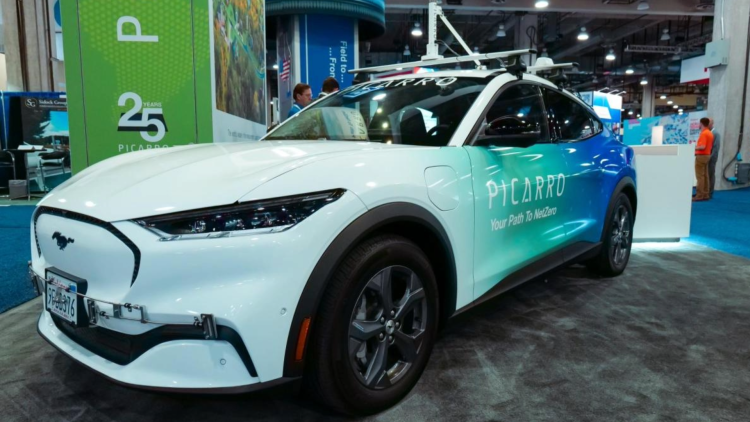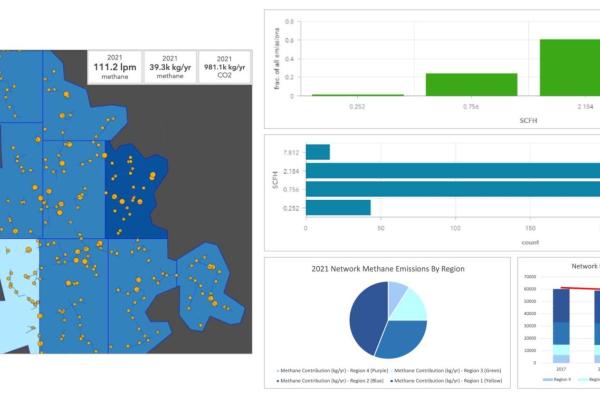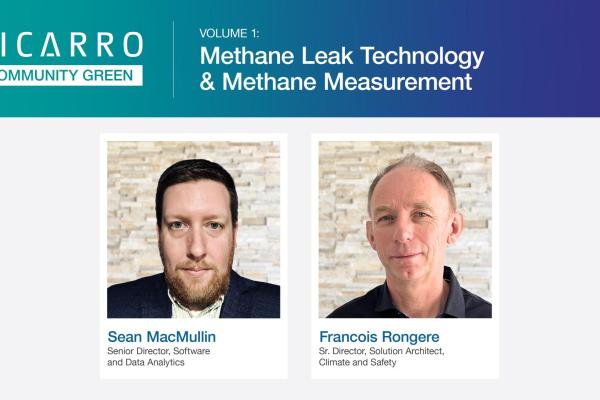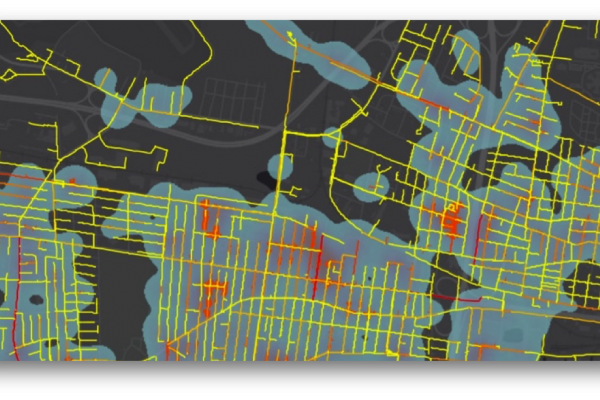Natural gas distribution system operators (DSO) around the world must detect and measure methane emissions to find and eliminate hazardous leaks, meet financial budgets and shareholder expectations, and address environmental, social, and governance (ESG) goals.
Mitigation can only happen once DSOs understand their emissions. It can be very challenging to account for fugitive emissions in a distribution network which may contain millions of pipe segments and other assets representing potential point emitters.
Many technologies available on the market today can identify leaking infrastructure; these include handheld devices, advanced mobile leak detection solutions (vehicle- and drone-based), aerial methods (LIDAR), continuous monitoring sensors, and satellites.
Few technologies are suitable for large-scale applications or can satisfactorily detect hazardous gas leaks in a distribution network.
This blog demonstrates that the vehicle-mounted AMLD, such as the Picarro AMLD, is the only technology that is sensitive enough and has the bandwidth to measure the entirety of a distribution network.
FINDING LEAKS - AVAILABLE TECHNOLOGY
Not all gas detection technologies can detect and measure emissions on a natural gas distribution system. A good measure of suitability for use on distribution networks is the minimum detection limit (MDL) compared to the lognormal emissions rate versus the cumulative leak distribution curve. As evidenced in Figure 1 the very skewed nature of the plot means that very few leaks comprise a large percentage of total emissions (i.e., as few as 5% of overall leaks may account for up to 50% of total emissions).
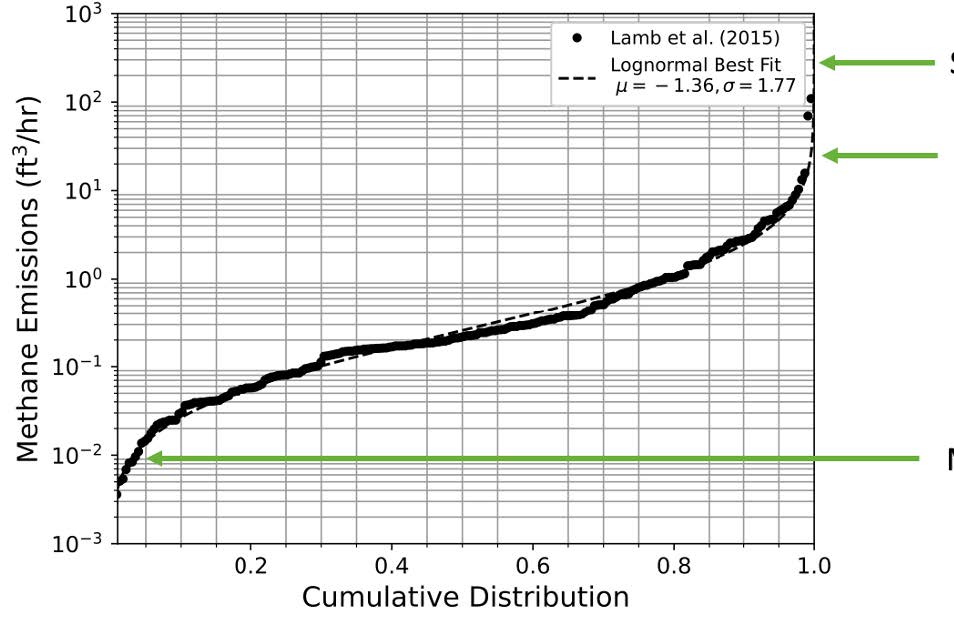
Figure 1. Graph showing methane emission versus cumulative distribution including a representation of what portion of the curve is visible to various technologies by MDL. AMLD is the only technology sensitive enough to measure the entirety of a distribution network.
Unfortunately, many technologies don't have a low enough MDL to see most leaks on a distribution network. In some cases, their "blind spot" includes even large leaks of >10-20 standard cubic feet per hour (scfh).
Technologies available to detect and measure leaks include:
- Handhelds - generally not sensitive enough and too slow (not scalable for entire network measurement in meaningful timeframe), poor leak find rate, limited by users;
- Satellites - poor spatial resolution, ultra-high MDL;
- Aerial-based LIDAR - expensive to deploy, weather-dependent, may not be able to gain access to all areas (FAA regulations, no-fly zones, etc.), high MDL;
- Drones - suitable for specific use cases (mainly upstream and downstream processing, potential for midstream), high operating costs, limited range; and
- Vehicle-based Advanced Mobile Leak Detection (AMLD) - Very low MDL (down to .01 scfh utilizing parts per billion (PPB) sensor), scalable to the entire network, cost-effective.
If the technology cannot measure the leak because it exists below the technology’s MDL, then the operator does not know it exists, and cannot mitigate it, resulting in both a less safe network and a lost emissions reduction opportunity. To accurately report baseline emissions and promote meaningful emissions reduction efforts, it is essential to measure leaks of all sizes contained in the network.
As the bullets above show, vehicle-based AMLD is the most powerful way to gather the emissions data necessary to compute a network-wide, measurement-based emissions estimate.
MEASURING LEAKS ACCURATELY
After a leak is detected, DSOs must measure it, and that is where the sensitivity and accuracy of the technology begin to matter. Accurately measuring the leak is the critical process that allows us to quantify later the emissions at the site or on the individual asset.
Along with accurately measuring leaks, it is vital to have enough infrastructure coverage to truly understand the severity of the leak (how great is the fugitive emissions problem). This need for accuracy and efficiency (scalability) is the ultimate arbiter of technology in the quest to quantify emissions at a large scale accurately. Using Picarro's AMLD, a local distribution company can cover the entirety of its network annually.
Picarro's accuracy in flow rate estimate has been validated over eight years through multiple controlled-release studies with operators and is being leveraged extensively in production workflows worldwide.
PICARRO’S VEHICLE-BASED AMLD
30+ customers from across the United States and around the globe adopt Picarro's AMLD's technology and methodology for compliance and focused leak surveys. Using Picarro's Advanced Leak Detection 4th generation (ALD 4.0) algorithm, customers can expect unrivaled performance with a >90% leak find rate, <10% false positives, and >90% field of view.
Figure 2 shows the Picarro AMLD’s standard components, including the gas inlet structure, ultralow-MDL methane-ethane sensors, anemometer, and GPS.

Figure 2. The Picarro AMLD solution showing the various components, including industry-leading minimum detection limit (MDL) methane-ethane sensors, which allow Picarro to identify, measure, and quantify fugitive methane leaks and emissions.
Key differentiators of Picarro’s AMLD over the other technologies presented in the previous section include:
- Speed of survey and scalability of the solution
- Sensitivity
- Rate of Industry Adoption
- Largest data lake in the world
- P-Cubed® analytics platform
Identifying and measuring fugitive leaks is the first step to mitigating or reducing emissions, and emissions reporting and reduction programs must be measurement-based and robust. Picarro's Emissions Measurement program, using the vehicle-mounted advanced mobile leak detection technology, can inform utility operators as to what assets are leaking (and by how much) and allow them to clearly report on changes in their network performance over time. This data can also help to make sound business decisions with meaningful granularity.
For more information on Picarro’s vehicle-mounted AMLD visit our website at gas.picarro.com
Would you like to read more? Register for the Picarro Gas Community! Gain unlimited access to restricted content including playbooks, technical guides and conference panels.
